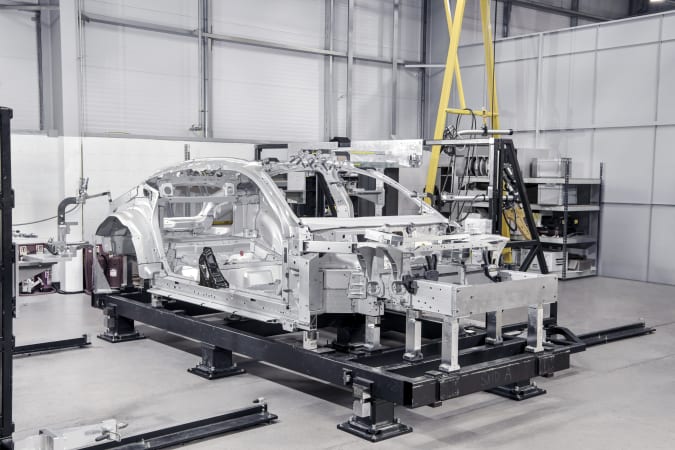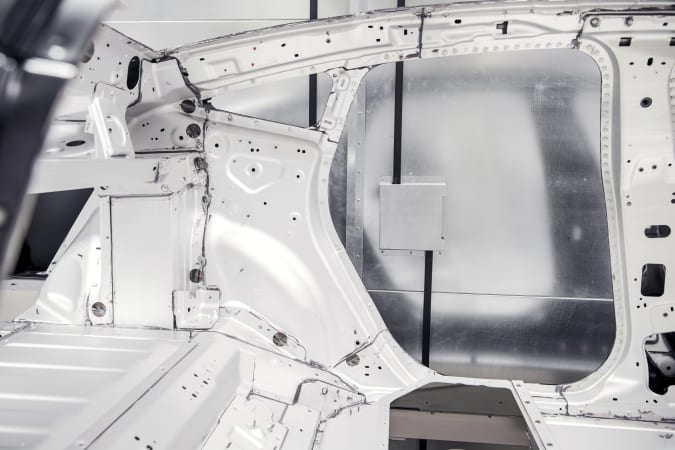The Polestar 5 will be built atop a ‘bespoke’ bonded aluminum platform
The Polestar 5 will be cut from a different cloth than its predecessors when it launches at the end of 2024. Polestar announced on Tuesday that its upcoming electric performance sedan will ride atop an entirely new, lightweight bonded aluminum platform rather, than the welded design used by the 1 and 2.
Polestar
Because welding aluminum generally halves its yield strength, you end up having to use double the amount of material to achieve the same performance — which defeats the whole purpose of using the lightweight metal in the first place. Bonding aluminum parts together (ie affixing them with screws and adhesive), on the other hand, cuts down on the materials needed but at the cost of extended production times.
“The cycle time to cure the adhesive is comparatively long compared to a typical welding cell,” Steve Swift, director of vehicle engineering at Polestar, told Engadget via email, adding “the strategy to control build consistency is very different to conventional construction methods.”
In order to maintain the material advantages of using aluminum while minimizing the production penalties of bonding the pieces together, Polestar’s engineering team developed a faster manufacturing process that assembles the vehicle body and battery platform as one.

Polestar
“We were able to bake in the structural stiffness targets we need to meet our dynamic performance aspirations at the beginning of the project,” Swifts said, explaining the benefits of a unibody construction process.
“As such, we will not have to make late modifications to the design to deliver on performance,” he conceded. “With a conventional strategy, if the platform and body performance contributions are discovered to be unbalanced, a compromise or modification becomes necessary.”
The design’s time-saving design has already born results, enabling the company to produce and deliver an early series of prototypes, just 18 months after the start of development. Swift expects the process to reduce “the timing for some of the production tooling required,” as well. What’s more, Polestar noted that the 5 “is being designed with torsional rigidity superior to that of a traditional two-seat sports or supercar” in Tuesday’s announcement and “is expected to weigh less than that of cars in smaller segments.” This should translate into increased range and improved handling, since there is less vehicle mass to move around.

Polestar
Though the technique cannot be retroactively applied to production of the Polestar 2, its success with the Polestar 5 could potentially lead to its implementation in future projects as well. “While nothing is in R&D just yet,” Swift said, “we have been dreaming of the possibilities it offers.”
All products recommended by Engadget are selected by our editorial team, independent of our parent company. Some of our stories include affiliate links. If you buy something through one of these links, we may earn an affiliate commission.
For all the latest Technology News Click Here
For the latest news and updates, follow us on Google News.
